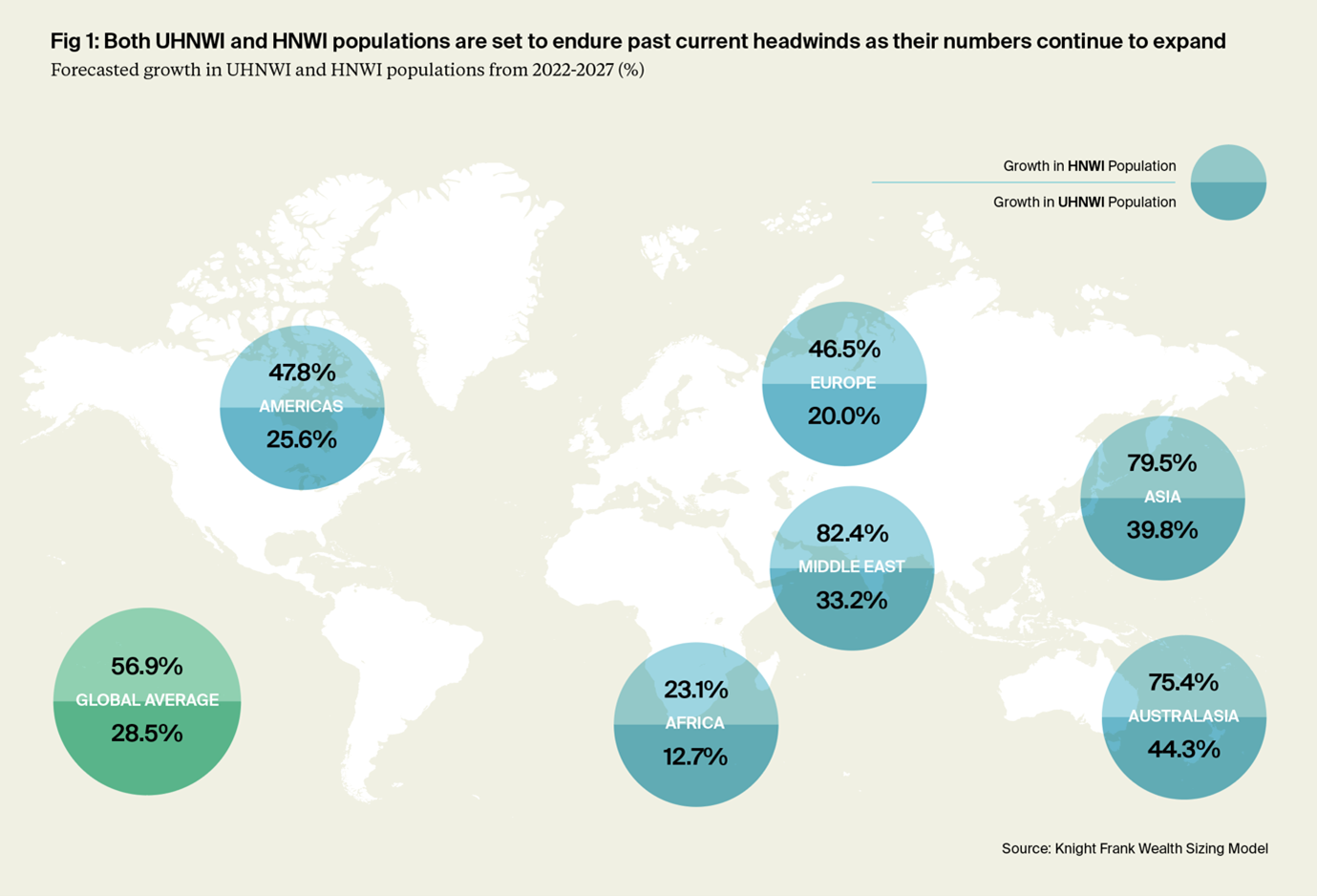Where are the rising wealth hubs across the globe?
Our Rise of The Super Wealth Hub Series highlights the evolving wealth landscape and its impact on property markets across these cities.
3 minutes to read
This article is co-written by Christine Li, Head of Research, Asia-Pacific; and Faisal Durrani, Head of Research, Middle East.
The fabric, make-up, and raison d’être of many cities worldwide have been recast in the wake of the pandemic, with global real estate markets experiencing price and demand volatility.
This has been underpinned by the ebb and flow of evolving demand drivers, which themselves have been heavily influenced by Covid-legacy factors such as the seemingly permanent shift to the adoption of hybrid working by many businesses to the outflow and subsequent return of residents from global city centres in search of more space and access to green sanctuaries.
The most successful cities have been those governed by decisive leadership and rapid action to contain the virus, which fostered confidence, bolstered their safe-haven status and thrust them to the forefront of global businesses and the world’s elite, reshaping global capital flows.
Asia and Middle East hubs
The rapid growth of Asia as a major player in wealth generation is being powered by a flourishing middle class and a generation of innovative entrepreneurs, and Singapore stands at the centre of this rising tide of wealth that has been targeting the city-state, catalysing its real estate market and driving up inbound FDI to 47% above 2019 levels.
In the Middle East, Dubai has emerged successfully after the pandemic, with its residential market registering record growth over the last three years, fuelled by the influx of global Hight-Net-Worth-Individuals in search of a second home and the sun-sand-sea lifestyle Dubai has become synonymous with. Indeed, the acute demand for luxury homes has propelled prices on the city’s iconic Palm Jumeirah by 146% since January 2020.
Elsewhere, the emirate’s office market is grappling with a shortage of prime space, a glaring contrast to many of the world’s long-established global financial capitals that are still trailing pre-pandemic office occupancy levels.
While a little more than 3,600 miles apart, the two city-states have taken their place in the history books as the two of the most resilient locations after the pandemic. Their attitudes towards building, preserving and reinventing themselves as live-work-play hubs for the world’s wealthy prompted us to investigate what makes these two Wealth Hubs so unique.
Future editions of our series will delve deeper into the workings of Dubai, in addition to Sydney, Hong Kong, and Shanghai – wealth centres, which we have also found to share similar live-work-play traits with Singapore and Dubai.
Our Rise of The Super Wealth Hub Series highlights the evolving wealth landscape and its impact on property markets across these cities, a complex interaction that mirrors the intricate fabric of global prosperity.
Our definition of a wealth hub includes: economic vitality, a stable political environment, excellent quality of life, diverse investment options and world-class infrastructure.
What makes a 'wealth hub'?
A financial centre distinguished by a robust legal framework, political and economic stability, elevated living standards, abundant talent pool, and resolute allure for the affluent. It encompasses not only promising economic opportunities for career growth, but also an exceptional residential environment and a dynamic range of leisure pursuits.
In the wake of the new century, a notable transformation has unfolded on the global stage. The global gross domestic product (GDP) trajectory has been remarkable, having expanded by nearly threefold. This impressive economic surge has naturally resulted in a corresponding increase in worldwide wealth. Within this context of growing prosperity, specific cities, characterized by a unique blend of attributes, have emerged as prominent Wealth Hubs. These urban centres have evolved into exemplar case studies for those aspiring to achieve similar prominence.
Looking ahead, this trend of structural wealth growth is expected to persist, presenting even more compelling opportunities for nations worldwide. Our latest Wealth Sizing Model alludes to this with a forecasted 744,812 Ultra High Net Worth Individual population by 2027, a 28.5% rise from 579,625 in 2022 (see below).

For more insights of the Rise of The Super Wealth Hub Series and to delve into specific cities, please click here.